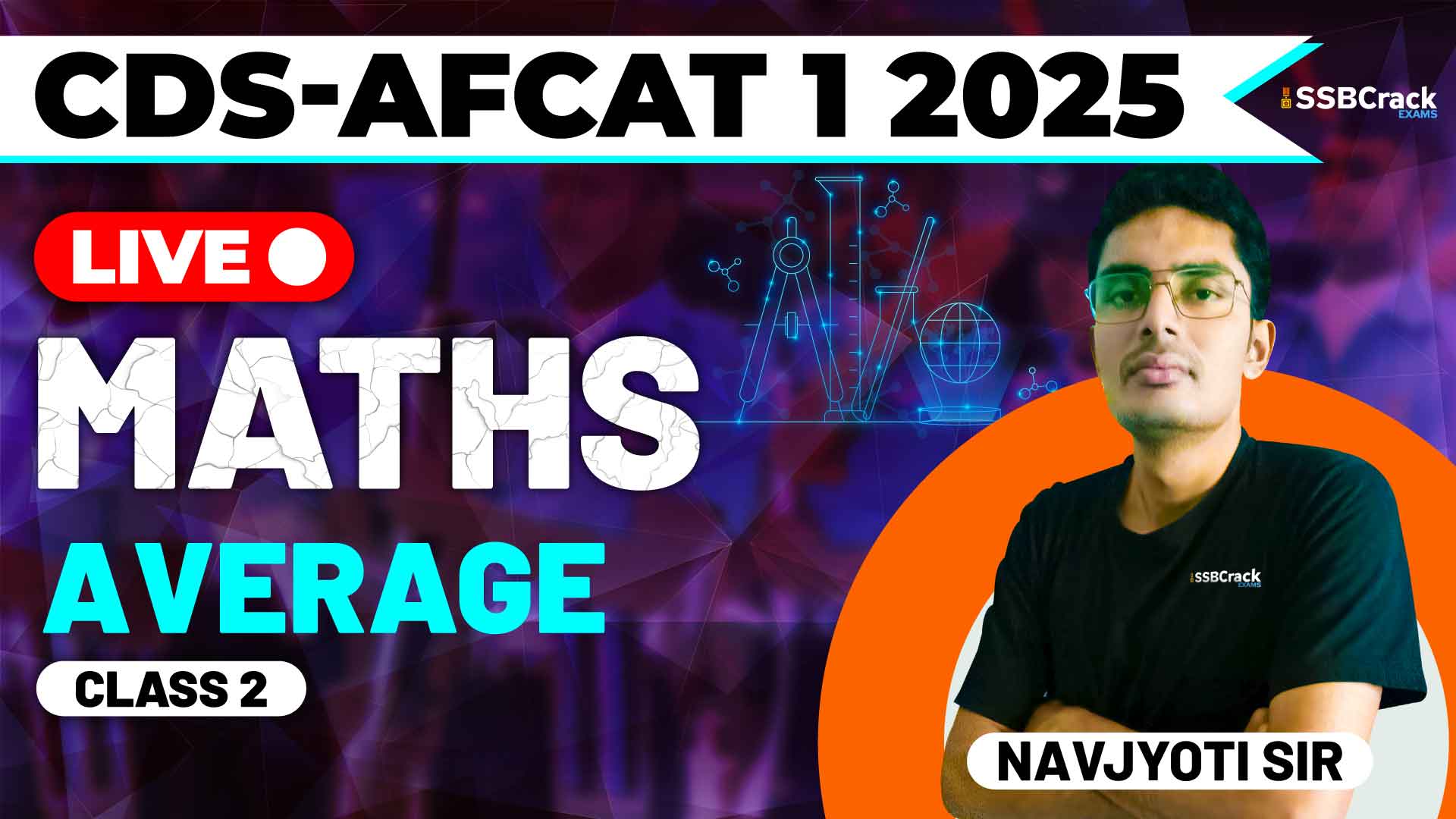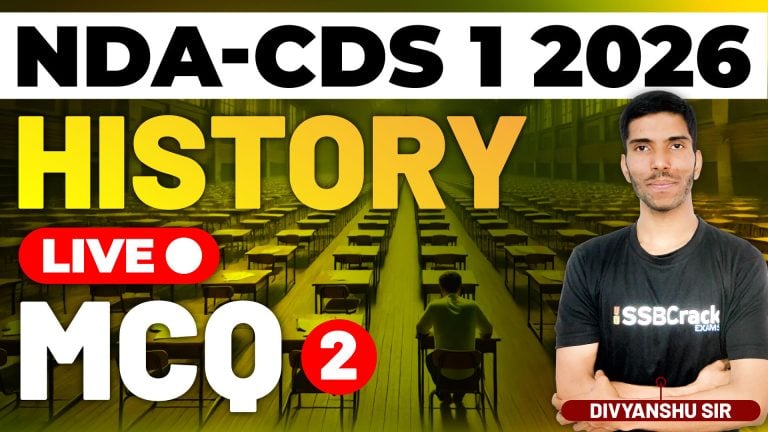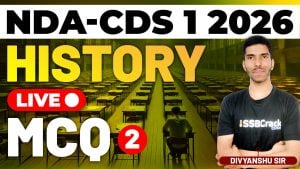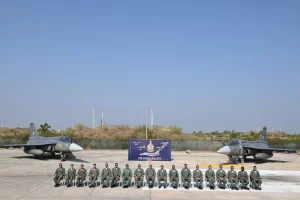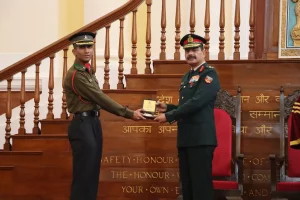The mathematics section of the Combined Defence Services (CDS) and Air Force Common Admission Test (AFCAT) exams demands clarity on fundamental concepts. One such crucial topic is Averages. A recent class on this topic focused on solving Multiple Choice Questions (MCQs), primarily aimed at boosting problem-solving skills and understanding the nuances involved in average-related questions. This blog will provide a detailed overview of the concepts discussed in that session, as well as effective strategies for preparing for average-related questions in these competitive exams.
What is an Average?
An average represents a central value of a set of numbers. It is a measure of the central tendency, which gives you an idea of the “middle” or “typical” value in a dataset. Averages are used extensively in everyday life, from calculating the average marks of a student in exams to the average time taken for a journey.
For CDS and AFCAT exams, questions on averages are usually direct but may vary in complexity based on how the information is framed. These can range from straightforward computations of averages to more complex scenarios where you need to deduce missing values or handle groups of numbers.
Key Concepts in Averages
The recent class on Averages dealt with the following essential concepts:
1. Basic Definition of Average
The average of a set of values is simply the total sum of all values divided by the number of values. This concept is the foundation for all average-related problems. In exams, this may appear as direct questions where you are asked to calculate the average of a given set of numbers.
2. Finding Missing Numbers
A common question type involves finding a missing number in a set when the average is known. This requires reverse calculation where you start with the average and total and work backward to find the missing value. These types of problems are common in CDS and AFCAT exams as they test your ability to manipulate and understand data from different angles.
3. Weighted Averages
Sometimes, different groups of numbers carry different “weights” or significance. For example, if one group has more members than another, its contribution to the average should be proportionally larger. This is known as a weighted average. It is an important concept, especially in real-world problems such as calculating average speeds, rates, or marks from multiple groups.
4. Applications in Word Problems
Many average-related questions in competitive exams are embedded in word problems. For instance, you might be asked to calculate the average salary of employees in a company, the average speed of a vehicle over multiple trips, or the average age of a group of people after including or excluding a member.
The key to solving these problems is to carefully extract the necessary data, set up the equation, and then apply the basic concept of average. In the class, special attention was given to breaking down word problems and identifying the relevant data points needed to solve them efficiently.
Strategies to Prepare for Average Questions in CDS and AFCAT Exams
Given the simplicity of the concept, it’s easy to assume that average-related questions are straightforward. However, the complexity lies in how these questions are framed, especially under the time pressure of an exam. Here are some strategies that were discussed in the class to help you prepare:
1. Understand the Basic Formula
Before you dive into solving MCQs, make sure you are thoroughly familiar with the basic definition of average. Once you have a solid understanding, practice calculating averages of various datasets quickly. This forms the basis for more complex problems involving averages in the exams.
2. Practice Reverse Calculations
In many competitive exams, you will find questions that give you the average and ask you to find one or more missing numbers. These reverse calculation problems can be tricky, especially when multiple data points are missing. Regular practice of such problems can help you get used to working backward from the average, which will ultimately improve your speed and accuracy.
3. Work on Word Problems
Most average-related questions are framed within real-world scenarios. Developing the ability to identify the necessary data quickly from word problems is essential. During practice sessions, focus on recognizing the core components of the problem: what is given, what is asked, and what can be deduced.
For example, if you are asked to calculate the average salary of employees in a company after one more employee is added, focus on the change in total sum and how it affects the average. Through continuous practice, you will become proficient in extracting the relevant data efficiently.
4. Use Estimation for Large Data Sets
Some problems may involve large data sets that require a quick calculation of averages. In these cases, approximation or estimation techniques can save you valuable time. If the numbers are relatively close together, you can round them slightly to simplify the arithmetic. This approach is particularly useful when time is a constraint, and you need to arrive at an answer quickly.
5. Solve Previous Year’s Questions
Practicing questions from previous CDS and AFCAT exams is an excellent way to understand the typical format of average-related problems. These exams tend to recycle certain patterns, so solving past questions will familiarize you with the types of problems you can expect. This will not only help you improve your problem-solving skills but also build confidence as you prepare for the actual exam.
6. Mock Tests and Timed Practice
Taking full-length mock tests is crucial for managing time during the actual exam. Often, students know how to solve a problem but run out of time because they take too long to figure out the approach. By taking mock tests and solving questions under timed conditions, you will improve both your speed and accuracy. Timed practice sessions also help in building the stamina needed for a long-duration exam like CDS or AFCAT.
7. Use Shortcuts and Mental Math
As discussed in the class, practicing mental math techniques and shortcuts can save valuable time. Whether it’s rounding off numbers or using quick addition and subtraction techniques, improving your mental calculation speed is essential for competitive exams. Make it a habit to solve basic calculations without writing them down to enhance your fluency in handling numbers.
Common Mistakes to Avoid
While preparing for Averages, candidates often make certain mistakes that can hinder their performance in the exam. Avoiding these pitfalls can make a significant difference in your score.
- Misinterpreting the Data: In word problems, always ensure that you carefully read and understand the data provided. Misinterpretation of the given numbers or overlooking key details can lead to incorrect answers.
- Overcomplicating Simple Problems: Sometimes, candidates tend to overthink or complicate straightforward problems. Stick to the basics and avoid unnecessary calculations that could waste time.
- Skipping Practice on Variations: While basic average questions are easy, don’t ignore questions involving missing values, reverse calculations, or weighted averages. These variations are commonly seen in competitive exams.
Conclusion
Averages form a fundamental part of the mathematics syllabus for both the CDS and AFCAT exams. Although the concept is relatively simple, the questions asked in competitive exams can vary in complexity, especially when combined with other concepts or presented as word problems.
To ace average-related questions in these exams, it is essential to develop a strong understanding of the basic concepts, practice regularly with MCQs, and familiarize yourself with the types of questions that have been asked in previous years. Strategies such as reverse calculations, working with word problems, and solving past papers will significantly enhance your ability to tackle average-related questions quickly and accurately.
With consistent practice, time management, and an understanding of the patterns followed in these exams, you can confidently approach and solve average-related questions in the CDS and AFCAT exams, ensuring a higher score in the mathematics section.
